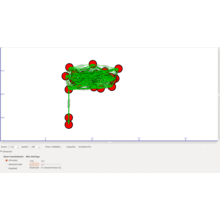NS3 SIMULATOR PROJECT TITLE
On the inter-domain scalability of route-by-name Information-Centric Network Architectures
Name resolution is at the heart of Information-Centric Networking (ICN), where names are used to both identify information and/or services, and to guide routing and forwarding inside the network. The ICN focus on information, rather than hosts, raises significant concerns regarding the scalability of the required Name Resolution System (NRS), especially when considering global scale, inter-domain deployments. In the route-by-name approach to NRS construction, name resolution and the corresponding state follow the routing infrastructure of the underlying inter-domain network. The scalability of the resulting NRS is therefore strongly related to the topological and routing characteristics of the network. However, past work has largely neglected this aspect.
In this paper, we present a detailed investigation and comparison of the scalability properties of two route-by-name inter-domain NRS designs, namely, DONA and CURLING. Based on both real, full-scale inter-domain topology traces and synthetic, scaled-down topologies, our work quantifies a series of important scalability-related performance aspects, including the distribution of name-resolution state across the Internet topology and the associated processing and signaling overheads. We show that by avoiding DONA’s exchange of state across peering links, CURLING results in deployment costs proportional to the total number of downstream customers of each Autonomous System. This translates to a 62-fold global state size reduction, at the expense of a 2.78-fold increase in lookup processing load, making CURLING a feasible approach to ICN name resolution.

 Click Here to watch our latest output video using NS3 simulator
Click Here to watch our latest output video using NS3 simulator  Click Here to watch our latest projects screenshots using NS3 simulator
Click Here to watch our latest projects screenshots using NS3 simulator